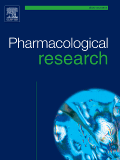
“Compounds extracted from the cannabis plant, including the psychoactive Δ9-tetrahydrocannabinol (THC) and related phytocannabinoids, evoke multiple diverse biological actions as ligands of the G protein-coupled cannabinoid receptors CB1 and CB2. In addition, there is increasing evidence that phytocannabinoids also have non-CB targets, including several ion channels of the transient receptor potential superfamily.
We investigated the effects of six non-THC phytocannabinoids on the epithelial calcium channels TRPV5 and TRPV6, and found that one of them, Δ9-tetrahydrocannabivarin (THCV), exerted a strong and concentration-dependent inhibitory effect on mammalian TRPV5 and TRPV6 and on the single zebrafish orthologue drTRPV5/6. Moreover, THCV attenuated the drTRPV5/6-dependent ossification in zebrafish embryos in vivo. Oppositely, 11-hydroxy-THCV (THCV-OH), a product of THCV metabolism in mammals, stimulated drTRPV5/6-mediated Ca2+ uptake and ossification.
These results identify the epithelial calcium channels TRPV5 and TRPV6 as novel targets of phytocannabinoids, and suggest that THCV-containing products may modulate TRPV5- and TRPV6-dependent epithelial calcium transport.”
https://www.ncbi.nlm.nih.gov/pubmed/30170189
https://linkinghub.elsevier.com/retrieve/pii/S1043661818311095

